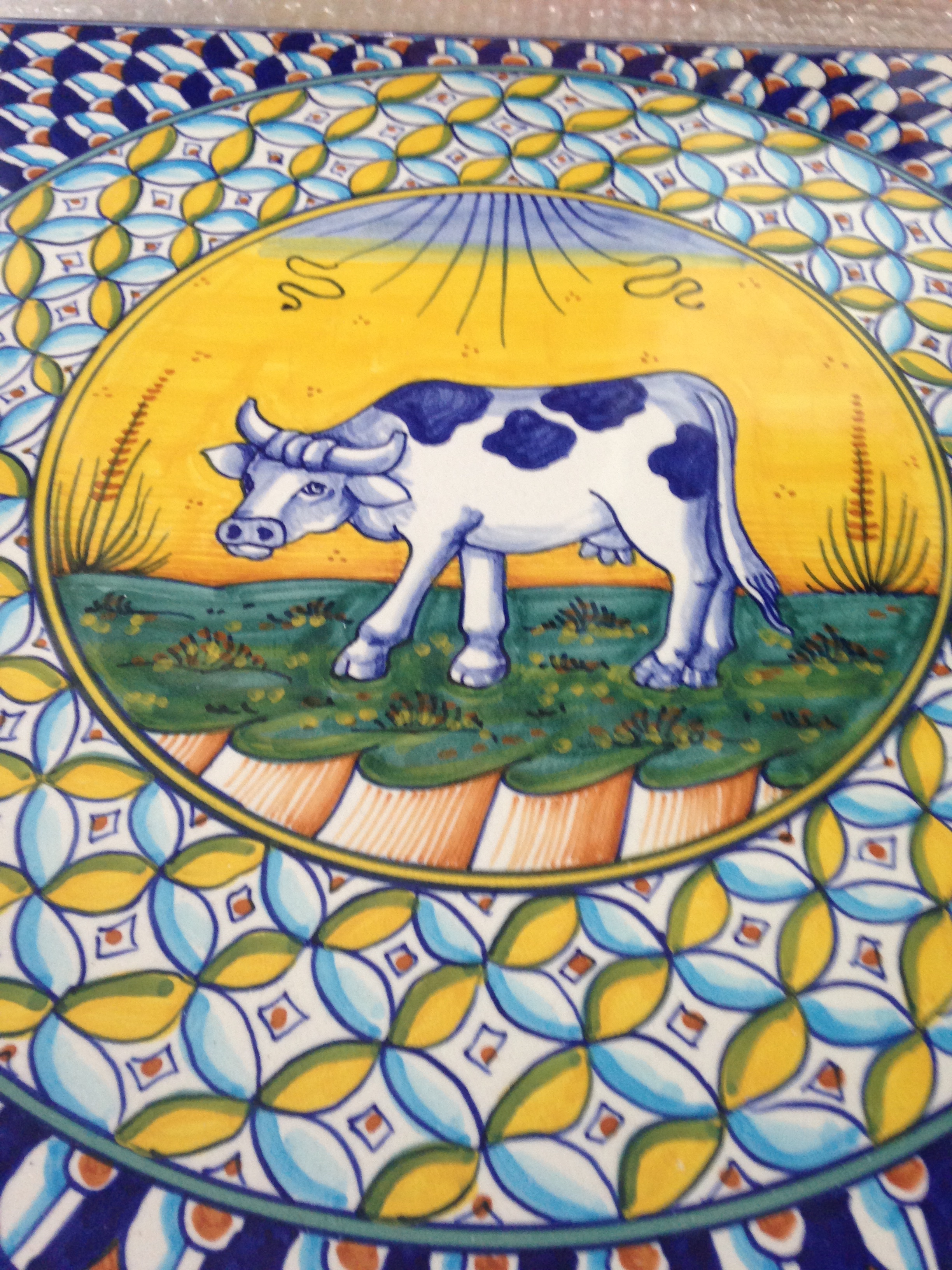Yesterday morning, at 10:30 AM, a quasi-Jeep pulled up to La Fattoria Del Gelso. Frederico, the son of the Ribigini family, had come to take me away. We swerved through the Umbrian countryside, to arrive in the sleepy town of Deruta.
After being fully indoctrinated with the Geribi Ceramics story in the United States, I was eager to see what the production in Italy is actually like, and Frederico was there to show me. My most recent memories of Geribi involved packing up vast piles of it to move into storage, when Via Umbria closed for renovations. Hopefully this visit would be a little lighter, literally and figuratively.
First stop: the museum.
After reading Bill’s post on the museum two years ago, I was eager to enter the ex-Franciscain monastery to see the history of ceramics in Deruta. And it was just as educational and inspiring as he said it would be.
The visual timeline the museum offers is exceptional. Ceramics have been in Deruta for centuries, and to see the first fragments, which use only one or two colors and are more carved designs than painted, and then to travel through the Renaissance and to modern times, is a visual treat. One can really come to understand who these ceramics are essential to the history and understanding of this place.
The museum closed at 1 (for lunch!) so Frederico showed me around the city. I delighted in the fact that all of the signs (don’t drink this water, parking is here, coffee this way) are handpainted Deruta tiles. Even the public benches are make of ceramic. Here, ceramics are part of the fabric of life, an element of style that has seeped into the blood of Deruta.
We headed back to the warehouse, where Frederico explained the layers that go into creating the final piece. The warehouse was full of ceramics in different stages of the creation process. It was so interesting to see the skeletons of so many ceramics that I have worked with for a year.
But then it was lunchtime. We headed to a nearby restaurant with the whole Ribigini family, where the breeze offset the dramatic heat. I got to properly practice my Italian ear – not just having a one on one conversation but being part of a multi-channel exchange.
I asked the family what makes their ceramics stand out in a town full of shops. In this historical place chock full of studios and rich with history, the Ribigini’s take Deruta ceramics and really make them their own, injecting the family style into each one of their creations. Patterns that I saw in the museum, historical styles of ceramics, are taken and given a vibrant twist in the Geribi studio. This is key in artwork, taking inspiration from proven old styles and refreshing them with the vibrancy of the present.
As we head back to Cannara, Frederico tells me he thinks the craft is dying out. Our generation is not as interested in carrying on the tradition of ceramics. He told me 10 years ago there were many more stores, but as the world modernizes, people are not as intent on staying with the family trade, as he and Claudia have done. He says this with a shrug, mentioning that it may make it easier for him in the future, if not that many others are producing the high quality ceramics in the same quantity.
I certainly hope these ceramics remain alive. When I use them back at La Fattoria Del Gelso that night for dinner, I have a renewed appreciation. I understand the history, inspiration, work, and love that went into creating my dinner plate. And that creates a truly rich meal.
Ci Vediamo!
–Elsa at Via Umbria
————
Via Umbria imports ceramics directly from the Ribigini family. Support their craft at our online store.















About The Author
Related Posts
Come one, come all!
Celebrate your special events at Via Umbria!